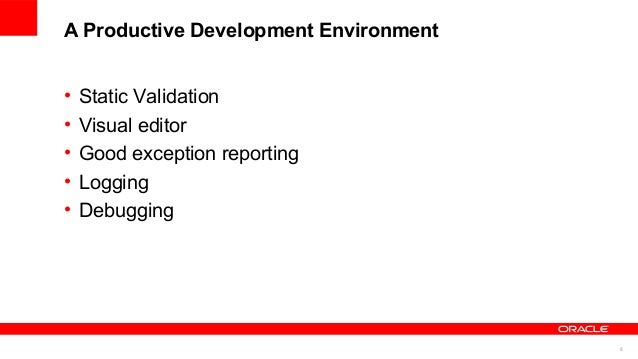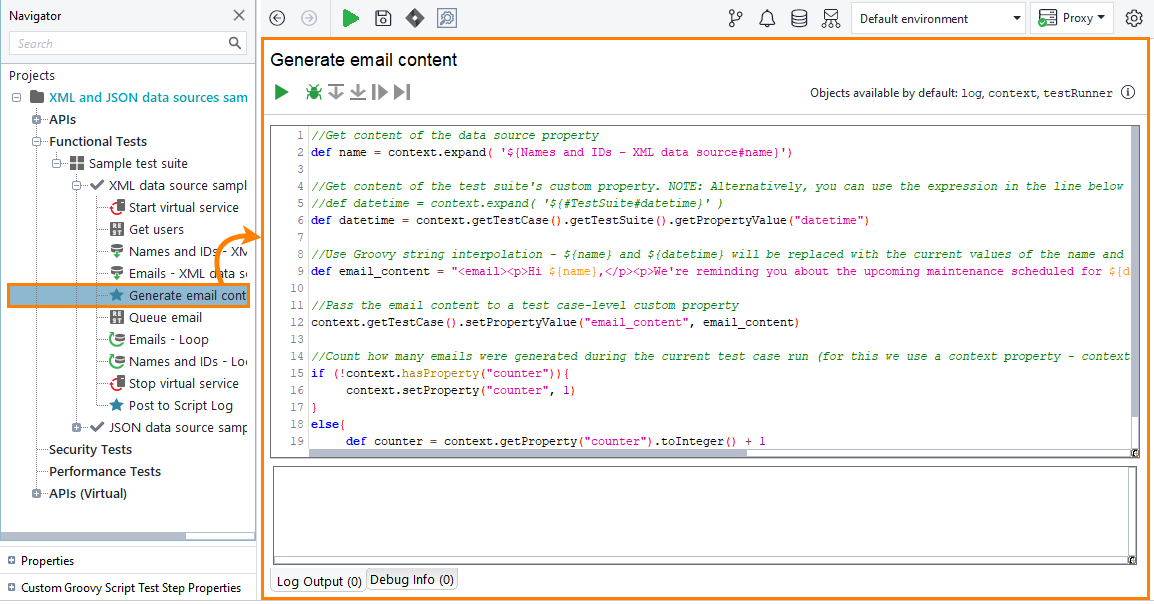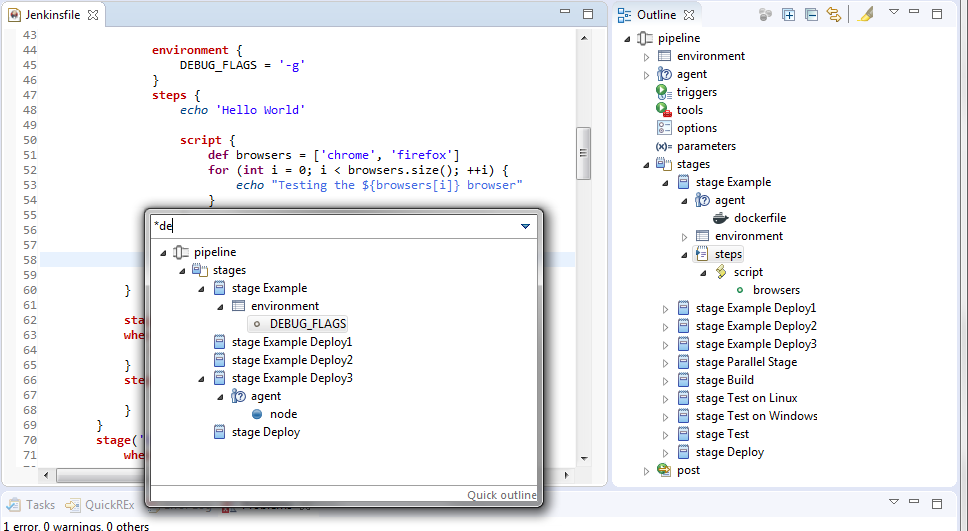Best Groovy Editor
Groovy Color Free Online Photo Editor. Photo, sketch and paint effects. For Tumblr, Facebook, Chromebook or WebSites. Lunapics Image software free image, art & animated Gif creator.
- Best Groovy Editor Software
- Best Groovy Editor Software
- Best Groovy Editor Free
- Best Groovy Editor For Pc
- Best Groovy Editor For Roblox
- Ubuntu 5.10 (Breezy Badger), released on 12 October 2005, was Canonical's third release of Ubuntu.Ubuntu 5.10's support ended on 13 April 2007. Ubuntu 5.10 added several new features including a graphical bootloader , an Add/Remove Applications tool, a menu editor , an easy language selector, logical volume management support, full Hewlett-Packard printer support, OEM installer support, a.
- SlickEdit has the most powerful Groovy features available including a rich set of symbol analysis and navigation features, integrated builds/compiles, powerful version control integration, Groovy debugger, beautifier, syntax expansion, syntax indenting, SmartPaste ®, symbol coloring, source diff, and much more.
- Pipeline Development Tools. Jenkins Pipeline includes built-in documentation and the Snippet Generator which are key resources when developing Pipelines. They provide detailed help and information that is customized to the currently installed version of Jenkins and related plugins.
You can create, import, test, and run Groovy applications as you would any other projects.
Before you start working with Groovy, make sure the Groovy plugin is enabled in IntelliJ IDEA.
Create a Groovy project
In the Project Wizard, select Groovy.
- Specify the following settings:
Project SDK- specify your project SDK.
Groovy library- specify the Groovy SDK. IntelliJ IDEA expects the standard Groovy SDK layout which is provided with the official distributions available at http://groovy-lang.org/download.html. Download the SDK, unpack it into any directory and specify this directory as the library home.
- Additional libraries and frameworks- if you need, specify additional libraries and frameworks that Groovy supports.
To add a library dependency after you've created or imported your Groovy project, refer to the add a library to the module dependencies section.
Java EE version- select the appropriate Java EE version.
Click Next.
Specify your project information and click Finish.
To import a Groovy project, follow the steps from the Import a project with settings section.
Add Groovy support for an existing project
You can add the Groovy framework support for an existing project. However, if you want to add the Groovy support for a Gradle or a Maven project, use their build script files (build.gradle or pom.xml ). For more information, refer to the Gradle or Maven documentation.
In the Project tool window, right-click the project and from the context menu, select Add Framework Support.
- In the dialog that opens, select Groovy and click OK.
IntelliJ IDEA adds the Groovy SDK to your project and you can add Groovy classes and Groovy scripts.
Check the version of Groovy in a project
Best Groovy Editor Software
You can check which version of Groovy SDK IntelliJ IDEA uses in a project.
From the main menu select File | Project StructureCtrl+Alt+Shift+S.
In the Project Structure dialog, under Platform Settings, select Global Libraries. If you need to check what Groovy SDK version is used in a module, select Modules, the module's name and click the Dependencies tab.
Change the existing Groovy SDK version in a project
In the Project StructureCtrl+Alt+Shift+S dialog, delete Ctrl+Y the existing Groovy SDK version from Global Libraries and from module dependencies (the Modules page).
When the Groovy SDK is removed, IntelliJ IDEA displays a popup suggesting to add the Groovy SDK. Click the link and set up a new SDK.
If, for some reason, IntelliJ IDEA does not display the popup, in the Project tool window, right-click the name of your project and in the context menu, select Add Framework Support.
In the dialog that opens, from the list of technologies, select Groovy and add a new Groovy library. IntelliJ IDEA creates a global-level library.
Generate Groovy documentation
You can generate the API documentation for the Groovy and Java classes that compose the Groovy language.
From the main menu, select Tools | Generated GroovyDoc.
In the dialog that opens, specify the output directory for the documentation and other available options and click Start.

Run a Groovy application
After you entered code, you can run it through IntelliJ IDEA or use the interactive Groovy console for quick code evaluation.
Open your application in the editor.
Press Shift+F10 to execute the application. Alternatively, in the left gutter of the editor, click the icon and select Run 'name'.
View the result in the Run tool window.
To run a Groovy script, from the context menu in the editor, select Run 'name'Ctrl+Shift+F10.
Best Groovy Editor Software
You can also click the icon on the main toolbar to run your application.
Debug a Groovy application
Open your Groovy application in the editor.
In the left gutter, set your breakpoints for the lines of code you want to debug. The debugger is aware of the Groovy syntax, and you can evaluate an expression on the breakpoint if you need. For more information on breakpoints, please see the Breakpoints section.
If you need, you can access the Run/Debug configurations dialog (Run | Edit Configurations) and adjust the settings, but usually the default settings are enough to successfully start and complete your debugging session.
Press Shift+F9. Alternatively, on the main toolbar, click the icon to start a debugging process.
- Evaluate the results in the Debug tool window.
For information on how to use options in the Debug tool window, see the Debug code section.
When in the debug mode, you can evaluate any expression by using the Evaluate expression tool, which is accessed by pressing Alt+F8. This tool provides code completion in the same way as in the editor, so it's easy to enter any expression.
Sometimes, you may want to step into a particular method, but not the first one which will be invoked. In this case, use Smart step into by pressing Shift+F7 to choose a particular method.
For more detailed information on debugging, refer to the Debugging section.
Test a Groovy application
Best Groovy Editor Free

You can test Groovy applications using JUnit 4 and JUnit 5 testing frameworks.
Open a class in the editor, for which you want to create a test and place the cursor within the line containing the class declaration.
Press Ctrl+Shift+T and select Create New Test.
In the dialog that opens, specify your test settings and click OK.
Open the test in the editor, add code and press Ctrl+Shift+F10 or right-click the test class and from the context menu select Run 'test name'.
IntelliJ IDEA creates a run/debug configuration for the test automatically, but if you want to edit settings in your configuration, click Run | Edit Configurations from the main menu.
In the Run/Debug Configurations dialog, on the right-hand side, specify settings for the test suite and click OK. The configuration has standard options and you can find further details in the Run tests section.
On the main toolbar, click the icon to run the test.
Evaluate the results in the Run tool window.
You can navigate between Groovy tests and test subjects (Navigate | Test / Test Subject ). If a test class doesn't yet exist, IntelliJ IDEA suggests to create one.
For deploying your Groovy application, refer to Working with Application Servers.
For building your Groovy projects IntelliJ IDEA lets you use Gradle, Maven, or IntelliJ IDEA own builder.
Best Groovy Editor For Pc

- Optional 'thank-you' note:
- Optional 'thank-you' note:
best Groovy support is in IntelliJ IDEA, which is commercial but still affordable. If you're a student or work for an open-source project, check out their special offers.
Netbeans has much improved lately, especially in supporting Grails and even Griffon. Check out their regular posts on the topic by Geertjan Wielanga.
Eclipse is ok but a bit behind the others.
cheers
Dierk

- Optional 'thank-you' note:
IntelliJ has been pretty nice for me. It's been especially nice when doing Grails work because I can write a closure in a taglib class and then immediately have it available in my autocomplete list in GSPs. Much happiness.
- Optional 'thank-you' note:
From the start I knew it has the least support (among the mentioned IDEs) for Groovy development but I still went with it because of familiarity with the IDE.
To get auto-complete functionality for GSPs, you will need to associate *.gsp files to the JSP editor then add the grails taglib definition on top of your page.
Eager to see better Groovy/Grails support in Eclipse.
HTH.
SCJP 1.2 (89%), SCWCD 1.3 (94%), IBM 486 (90%), SCJA Beta (96%), SCEA (91% / 77%), SCEA 5 P1 (77%), SCBCD 5 (85%)
- Optional 'thank-you' note:
Best Groovy Editor For Roblox
posted 12 years ago- Optional 'thank-you' note:
For me, I can honestly say this is the best way to write groovy code. Maybe I'll see if IDEA is better at some point (picked up a license at No Fluff way back), but textpad seems to be just fine.

- Optional 'thank-you' note: